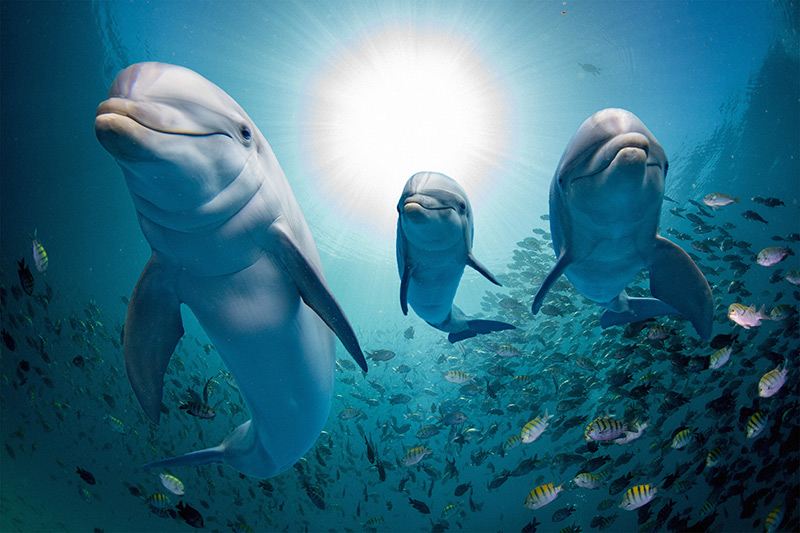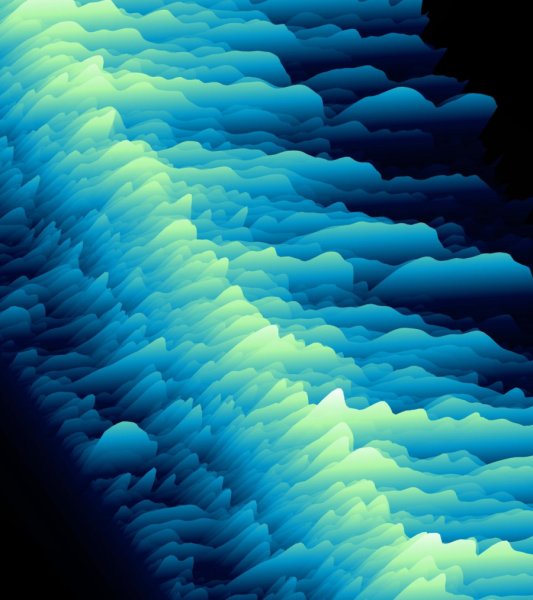
23rd January 2018 New algorithm recognises dolphin clicks in underwater recordings Could it one day be possible for humans to communicate with dolphins? Thanks to a new algorithm, scientists have just got a step closer to understanding these highly intelligent animals.
Scientists have developed a new algorithm that can identify distinct patterns among millions of clicks in recordings of wild dolphins, whose communication serves as a sentinel of ocean ecosystem health. This approach is presented in PLOS Computational Biology by Kaitlin Frasier of the Scripps Institution of Oceanography at the University of California San Diego and colleagues. It could potentially help distinguish among dolphin species in the wild and reveal new clues about their behaviour and communication. Frasier and her team built autonomous underwater acoustic sensors called HARPs (High-frequency Acoustic Recording Packages) that could record dolphins' echolocation clicks in the wild for over a year at a time. These instruments can serve as non-invasive tools for studying many aspects of dolphin populations including how they are affected by hazards such as the Deepwater Horizon oil spill, natural resource development and climate change. “We're mainly focusing on trying to identify dolphin species or genera consistently in our very large acoustic library,” Frasier said. “We have hundreds of terabytes of data now, so we've turned to machine learning methods to attack the problem. The end goal is to be able to monitor dolphins and maybe other marine mammals effectively in remote locations and challenging oceanographic locations, so that we can help understand long-term trends.” Because the sensors record millions of clicks, it is difficult for a human to recognise any species-specific patterns in the recordings. The researchers used machine learning to develop an algorithm that can uncover consistent click patterns in very large datasets. The algorithm is “unsupervised,” meaning it seeks patterns and defines different click types on its own, instead of being “taught” to recognise patterns that are already known.
The new algorithm was able to identify consistent patterns in a dataset of 52 million echolocation clicks recorded by five HARP units deployed in the Gulf of Mexico over a two-year period. These click types were consistent across monitoring sites in different regions of the Gulf, and one of the click types that emerged is associated with a known dolphin species. The research team hypothesizes that some of the consistent click types revealed by the algorithm could be matched to other dolphin species and therefore may be useful for remote monitoring of wild dolphins. This would improve on most current monitoring methods, which rely on people making visual observations from large ships or aircraft and are only possible in daylight and good weather conditions. Next, the team plans to integrate this work with deep learning methods to improve its ability to identify click types in new datasets recorded in different regions. Researchers will also perform fieldwork to verify which species match with some of the new click types revealed by the algorithm. “It’s fun to think about how the machine learning algorithms used to suggest music or social media friends to people could be re-interpreted to help with ecological research challenges,” Frasier said. “Innovations in sensor technologies have opened the floodgates in terms of data about the natural world, and there is a lot of room for creativity right now in ecological data analysis.”
Comments »
If you enjoyed this article, please consider sharing it:
|








